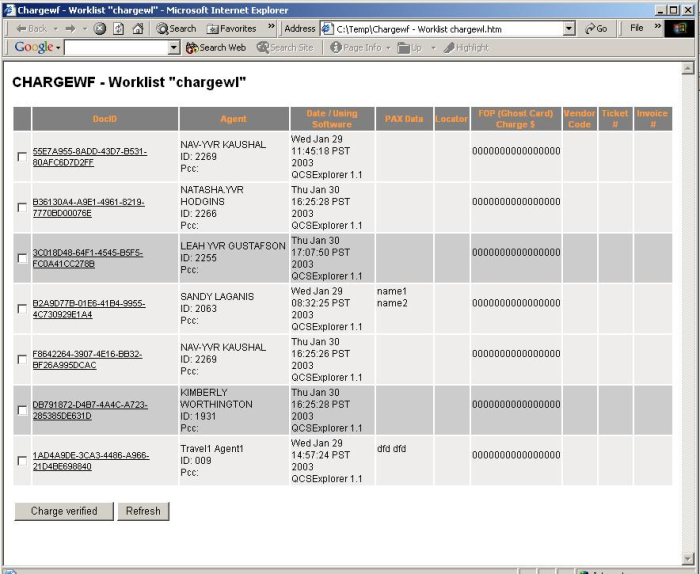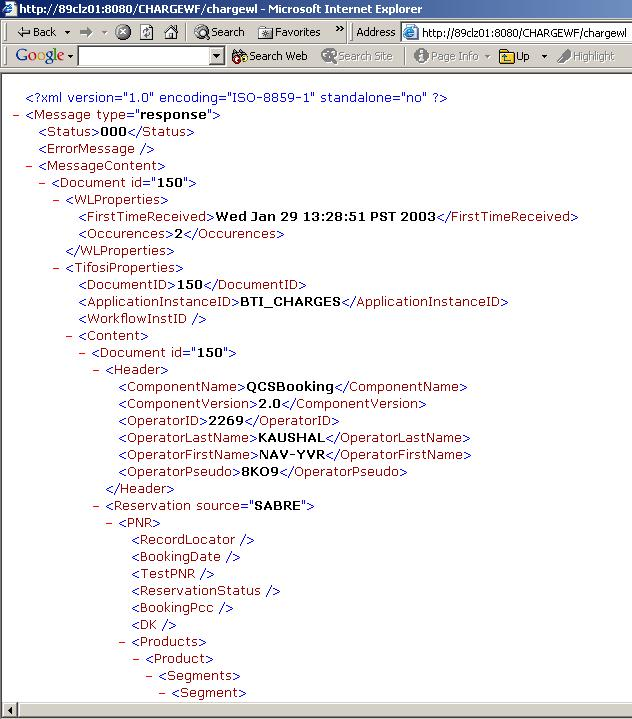
Customer Profile
BTI Canada is the Canadian partner in Canada for Business Travel International (BTI), the world's largest organization of travel management companies. BTI Canada's divisions include its corporate travel management division, a leisure travel service called Travel Escapes, Bravo Meeting Management Solutions and GTS (Government Travel Service). BTI Canada combines its 12 offices in Canada with BTI's network of 3,000 offices in 80 countries to offer solutions that maximize opportunities for global leverage while responding to unique local needs.
Business Problem
BTI Canada is the second largest Travel Agency in Canada, providing corporate travel services to major organizations including the Government of Canada. Its other lines of business include Loyalty Program Management, Meeting Management, Online Fulfillment Services and Knowledge Management. A year ago, BTI Canada started to provide travel services in support of a significant Loyalty Program. End-users calling into make travel reservations had to have the ability to pay for tickets based on accumulated points – as opposed to miles which are used for other loyalty programs. The deployment of this loyalty program required special workflows to be implemented across the Booking, Accounting and Ticketing departments at BTI Canada, to ensure that all transactions were logged and accounts reconciled easily.
- From within SABRE (Global Distribution Systems) linked to through BTI Canada's Booking Application
- Directly into the Tour operator mainframes with the same Booking Application
- Through third-party travel websites such as www.travelocity.com
Transaction tracking was complicated by the fact that a travel counselor making a reservation can purchase various travel products through at least three mechanisms:
The request for each reservation flows through three departments – Booking, PNR Validation and Ticketing - prior to final confirmation and ticketing. Various business rules have to be applied to ensure proper tracking. For instance:
- When the booking is made through the SABRE reservation system or directly with the Tour Operators, then the tracking information is stored on the Tour Operators reservation system.
- When the booking is made through third-party web-sites by the travel counselor using the BTI Canada Internal Charge Cards (referred to as "Ghost cards") then BTI Canada does not have a comprehensive mechanism to track which travel counselor did which booking, or to consistently check the financial commitments made by each travel counselor.
The lack of consistent accountability of travel counselors to supervisors for financial commitments, as well as the difficulty of tracking transactions proved to be a serious problem as more and more travel counselors were using third-part web-sites for making bookings. This in turn resulted in financial inconsistencies among various systems across the Booking, Accounting and Ticketing departments. The project raised interesting challenges for the organization, both in terms of technology and processes.
Internal Systems:- Applications written in various languages from 4GL to Visual Basic to Java
- Various kinds of databases and accounting systems
- SABRE (Central System hosting 35% of all travel reservations booked worldwide)
- Point transactions (redemption, void) and cash charges to track and manage
- Complex processes from Booking, Ticketing, Point and cash transaction fulfillment, financial reconciliation, reporting
- Real-Time communications with Business Partners over the Internet
- The Loyalty Program has 3 sub-programs, each with different set of business rules
- Track reservations from a "customer stand point":
- Is the ticket issued on time for the customer to travel?
- Is the payment in Points and Cash calculated correctly?
- If a client cancelled a trip, what means was used?
- Are all tickets voided?
- Are all invoices voided?
- Is the client credit card credited back?
- Is it a partial refund?
- Are all Point Redemption voided?
- Are the transactions settled already (different process)?
- Track counsellor performance
- Know the amount of reservations made by each office in Real-Time.
- Finance needs to ensure the accounting systems are kept up-to-date.
- Track all financial transactions (Point and Cash).
- Know the Cash-Balance in Real-time.
- Interfacing the new data with existing legacy databases and back-end applications
- Cost and development time
Finally, our customer needs customized reports with various combinations of data for all the systems and up-to-date and clear reconciliation feeds.
Solution
- XML in general and Fiorano ESB specifically were key to the success of the project
- BTI Canada worked in Phases, prioritizing sub-projects based on their time to market and the measurable benefits they would bring to the business
- BTI Canada used Fiorano ESB to monitor existing processes and track operations performed on Charges and PNRs. This enabled brought immediate business value by creating accountability for the travel counsellors as well as tracking financial transactions in Real-Time
- The approach was non-intrusive and involved only minor changes to existing applications. The applications would simply notify Fiorano ESB of the completion of their task for each charge and PNR through a basic HTTP POST
- Time-to-Market was short and risks linked to modifying large chunks of code was removed
- The system was designed and written by BTI Canada's Technical Architect Sebastien Flacher and consultant Laurent Michalkovic
- Charge Workflow implemented as a Fiorano ESB Application
BTI Canada's first Fiorano ESB Workflow enabled them to track commitments made to their internal cards by the travel counsellors in Real Time BTI Canada built XML configuration files listing Credit Card numbers and made the booking applications parse these files Each time a card usage was detected. BTI Canada captures the current screen or web page as well as the following two pages so that they are able to track back who the booking was for and how much was spent. All this is placed into an XML document and sent to Fiorano ESB through a "ChargeListener" running as a servlet on a web server Chargelistener Fiorano ESB Service - This receives the XML messages sent by BTI Canada Booking applications (Custom 4GL application and/or customized browser). LogActivity1 Fiorano ESB Service – It is responsible for tracking for whom and when exactly a charge was created (Ghost Card used). It then transfers this data into a database "log". In this case, BTI Canada mostly logs Travel Counsellor Activity to build accountability. ChargeWorklist Fiorano ESB Service – BTI Canada needed to gather all the incoming messages into one Fiorano ESB service so that their business users could verify them one by one (through a web page) and eventually validate each of them. They therefore defined a new Component called a Worklist. A "Worklist" is a servlet running on a J2EE web server and acts as a "message accumulator". The Accumulator is queried through an XML API over HTTP. The XML API allows building customized Web pages to hide XML details from the users. Users can then verify the accuracy of the data, make comments and changes and finally let the message go to the next task. Here is a "Business User Interface" with the list of charges recently captured by BTI Canada booking applications and sitting in the worklist:
LogActivity2 Fiorano ESB Service – This service once again checks the messages and tracks who and when the previous operation was performed. In this case, BTI Canada logs QA people and supervisors responsible for verifying the accuracy of the information entered in the system. The messages are transferred into a database for reporting purposes. Further reporting web pages were build for the Finance Department and BTI Canada Call Center Division. Once again, changes to BTI Canada applications were very easy to achieve. This was achieved by downloading the list of credit cards, capturing three screens (terminal screens or web pages), building an XML message and sending it to the "ChargeListener". To handle errors BTI Canada attached mail and display components to each RDBMS. (For Adapters ON_EXCEPTION out port.) This way the system administrator is notified as soon as the Database link encounters any problem. This functionality is later added to the custom made Fiorano ESB Components. In this first Phase, Fiorano ESB is not used to perform processing but is used to monitor the work being done by Travel Counsellors and Applications. This non-intrusive approach provides a great value by reporting inconsistencies within existing Business Processes.
- Booking Workflow implemented as a Fiorano ESB Application
BTI Canada's second Workflow is not implemented yet but will enable BTI Canada to track Bookings in Real-Time.- Changes to applications: BTI Canada added enough code to each application so they could build XML messages from a template and HTTP so as to POST it to some services of the Fiorano ESB workflow. These included onlly minor changes.
- Sample of a Document sent to Fiorano ESB by the booking Application

Benefits
BTI Canada provides travel services to a range of corporate customers, customizing solutions according to unique needs. One of its largest customers offers a comprehensive points-based loyalty program. BTI Canada's three departments Booking, Accounting and Ticketing were using applications that were developed as departmental solutions. There was no way to check the consistency of various financial transactions for reconciliation purposes at any given point of time. The problem of tracking accounting errors was compounded by the fact that these applications were running on different platforms and were written using varied programming languages. BTI Canada solved this problem by using Fiorano Enterprise Service Bus (Fiorano ESB) to track commitments made to their internal credit cards by their travel counselors in Real Time. In addition to minimizing accounting errors, BTI uses Fiorano ESB monitoring capabilities for tracking the accountability of the 140 travel counselors at various call centers located in Canada.
About Fiorano Software
Fiorano Software (www.fiorano.com) is a leading provider of enterprise class business process integration and messaging infrastructure technology. Fiorano's network-centric solutions set a new paradigm in ROI, performance, interoperability and scalability. Global leaders including Fortune 500 companies such as Boeing, British Telecom, Credit Agricole Titres, Lockheed Martin, NASA, POSCO, Qwest Communications, Schlumberger and Vodafone among others have used Fiorano technology to deploy their enterprise nervous systems.
To find out more about how Fiorano can help you meet your enterprise integration objectives, visit www.fiorano.com or Email us, we will contact you!

 Japan
Japan Germany
Germany

